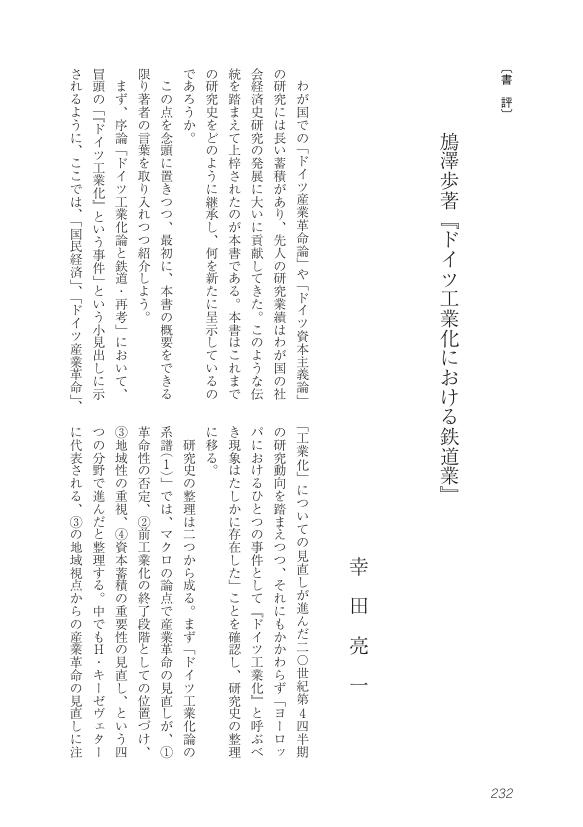2 0 0 0 OA 一九世紀末ドイツにおける大量生産の開始と工作機械工業
- 著者
- 幸田 亮一
- 出版者
- 経営史学会
- 雑誌
- 経営史学 (ISSN:03869113)
- 巻号頁・発行日
- vol.27, no.2, pp.31-62,ii, 1992-07-30 (Released:2009-11-06)
This study intends to analyze the initiation of mass production technology and its influence on the machine tool industry in Germany at the end of the 19th century.It is still believed, that at the end of the 19th century, mechanical engineering industry in Germany was technologically far behind as compared with the standard of the USA. The “American system of manufacturing” was often used to emphasize the above notion to prejudge the German machine tool industry. However, it is a question to assess whether the development of the German machine tool industry was far behind than that of America.Even in the USA, the sewing machine, one of the typical product of the “American system, ” was made as a hand-made one at the beginning. Sewing machine builders in the USA introduced its mass production upon interchangeable parts in 1870s, after few years of this change, German also began to intoroduce this system. This pattern was also true for industries like bicycle, fire arm and typewriter.In order to make parts for the above machines, it was inevitable to use new kind of machine tools like milling machine or turret lathe. Although these machines were developed by American engineers in the middle of the 19th century, their commercial production commenced even in the USA in the middle of 1860s. After few years later German machine tool builders also started to copy and improve them.In the stage of developing process of the mass production, the machine tool industry played a “convergent” roll not only in the USA but also in Germany. At the beginning of the 20th century, the German machine tool technologies had been developed significantly in order to compete with the American builders in the world market.
2 0 0 0 OA ドイツにおける「新工場制度」の成立と労働時間短縮
- 著者
- 幸田 亮一
- 出版者
- 経営史学会
- 雑誌
- 経営史学 (ISSN:03869113)
- 巻号頁・発行日
- vol.33, no.4, pp.1-24_1, 1999-03-25 (Released:2010-11-18)
Factory systems changed drastically around the turn of the 19th to 20th century in the Western countries. In the United States many researchers have analyzed the rise of the new factory system, but in Europe on the contrary there are many issues still unsolved. Not a few researchers still believe that the German factory system at that time was far behind that of America. Actually, however, many contemporary scientists and engineers devoted themselves to solving problems related to machinery, industrial psychology, management and so on. In this paper the historical change of the classic factory system to the new one will be examined in the German machine building industry.The first section deals with the new factory system from the view points of architecture, machinery and administration focusing on the great rolls of engineers. Through their activities traditional workshop management was substituted by a kind of “scientific management”. The second section describes the reduction tendency of working hours from the middle of the 19th century to WW1 and then points out the importance of new time management through introducing the American time-recorder. The third section analyzes the relations between the mass production system and the reduction of working hours by using two survey reports of the German metal workers union in 1911 and 1912. Results of these surveys suggest that there were intimate relations between the two.Factory science was well developed in Germany at that time, and it is reasonable enough to consider those engineers who led efforts before WW1 as forerunners of the German rationalization movement of the 1920s.
2 0 0 0 OA 〓澤歩著『ドイツ工業化における鉄道業』
- 著者
- 幸田 亮一
- 出版者
- 大阪経済大学日本経済史研究所
- 雑誌
- 経済史研究 (ISSN:1344803X)
- 巻号頁・発行日
- vol.12, pp.232-239, 2009-02-10 (Released:2018-11-01)
2 0 0 0 OA 第二次大戦後ドイツ工作機械工業の復興過程
- 著者
- 幸田 亮一
- 出版者
- 社会経済史学会
- 雑誌
- 社会経済史学 (ISSN:00380113)
- 巻号頁・発行日
- vol.75, no.6, pp.629-648, 2010-03-25 (Released:2017-05-24)
第二次大戦中に軍需生産を支え活況を呈したドイツの工作機械工業は,敗戦後,一転して危機の時代を迎えた。本稿の課題は,ドイツ工作機械工業が経験した困難の実態はいかなるもので,復興はいかにして可能だったのかを,旧西ドイツ地域を中心に,連合国の政策転換を踏まえつつ,個別企業の具体的動向を含めて解明することである。本稿の結論は以下のとおりである。第1に,戦災ならびに戦後のデモンタージュ(設備撤去)は,短期的には大きな損害を個別企業に及ぼしたものの,長期的に見ると過剰設備の除去と新市場の創出をもたらした。第2に,通貨改革と租税改革は直接的に,マーシャルプランは見返り資金という形で間接的に工作機械企業の復興を促した。第3に,立地の変化を見ると,ソ連占領地区から逃避・移転した企業により,西部ドイツ,西南部ドイツの比重が増大した。総じて,このような困難期を乗り越えることができたのは,東側から西側へ移転した複数のメーカーの事例が端的に示すように,長年にわたり築かれてきた知的・人的蓄積であったといえる。
1 0 0 0 IR 第一次大戦前ドイツにおける青年労働者と余暇
- 著者
- 幸田 亮一
- 出版者
- 熊本学園大学商学会「熊本学園商学論集」編集委員会
- 雑誌
- 熊本学園商学論集 = The Kumamoto-Gakuen journal of commerce (ISSN:13410199)
- 巻号頁・発行日
- vol.24, no.1, pp.1-23, 2020-01
1 0 0 0 IR 杉田先生を偲んで (杉田憲道教授追悼号)
- 著者
- 幸田 亮一 池上 恭子
- 出版者
- 熊本学園大学商学会
- 雑誌
- 熊本学園商学論集 = The Kumamoto-Gakuen Journal of Commerce (ISSN:13410199)
- 巻号頁・発行日
- vol.22, no.1, 2017-12-27
1 0 0 0 OA 一九九二年の外国経営史
1 0 0 0 OA 戦前における九州横断観光ルートの整備 : 三角築港と阿蘇開発
- 著者
- 幸田 亮一
- 出版者
- 熊本学園大学商学会
- 雑誌
- 熊本学園商学論集 = The Kumamoto-Gakuen Journal of Commerce (ISSN:13410199)
- 巻号頁・発行日
- vol.18, no.1, pp.123-136, 2014-01-31

